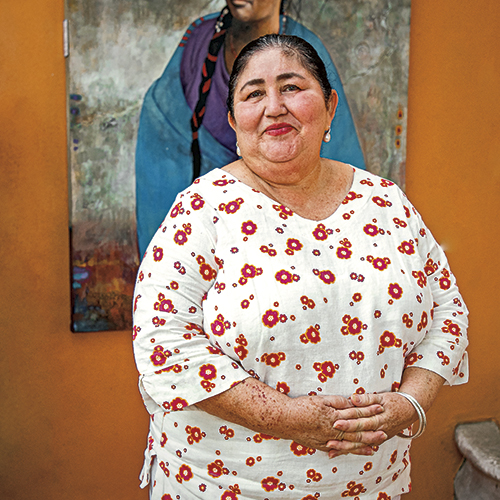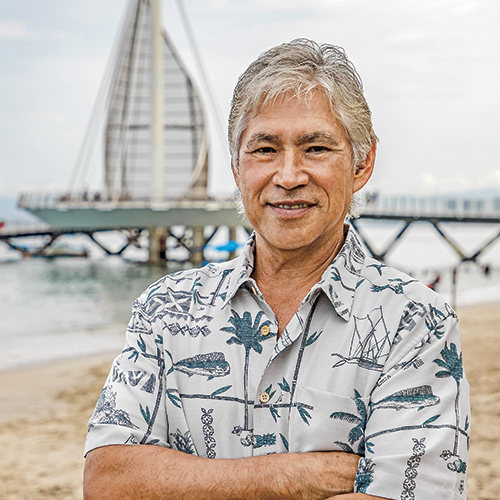Road Trip North and South Puerto Vallarta: History, Flavors and Landscapes

When we think of Vallarta · Nayarit, the first images that comes to mind are its coastline bathed by the stunning Pacific Ocean, inspiring sunsets and chic hotels and restaurants. While it is true that the setting, glamor and comfort of our destination never fail to enchant us, the region also offers many other attractive areas that visitors probably have not yet discovered, places with their own charm, history, activities and cuisine, perfect for a day trip.
The Vallarta Lifestyles Editorial Staff decided to give you another perspective on what the Vallarta · Nayarit area has to offer, through two road trips (the first to the north and the second to the south), with scenery, villages and other attractions you rarely find in typical travel guides.
Ready? Fasten your seatbelt; here we go!
Northern Route: La Tovara and Historic San Blas
We left Puerto Vallarta before dawn on this 93-mile (about three-hour) road trip. As we followed Federal Highway 200 north past the lovely Nayarit coastal towns of Sayulita, San Pancho, Lo de Marcos and Guayabitos, we were delighted by the beautiful sight of the sun rising from behind the mountains, the first rays of light on a day that promised to be full of excitement.
Upon arriving at Las Varas, we turned off toward San Blas, and shortly before arriving, we made our first stop, at La Tovara National Park. Here, fresh spring water from the mountains mixes with the salt water of the sea, forming an incredible estuary that serves as home to thousands of species of flora and fauna. To explore it, we boarded a boat at La Aguada jetty, the main entrance to this nature reserve.

The Natural Park La Tovara is home to thousands of species of flora and fauna
The journey through this mangrove swamp was a true connection with nature, an opportunity to see crocodiles, turtles and birds such as tiger herons and kingfishers, among many other species. Without leaving the boat, we could see the old set of the film Cabeza de Vaca, where the impressive houses on stilts still remain. Finally, we arrived at a small restaurant where, in addition to enjoying a traditional dish, we were able to take a dip in its refreshing swimming area, safely, in the middle of the jungle.
After leaving La Tovara, we arrived in San Blas in less than 10 minutes. Founded around 1530 by Spanish conquistador Nuño de Guzman, this town was the North Pacific’s most important port during the colonial era. At Cerro de Basilio we saw two examples of San Blas’s illustrious past: “La Contaduría” fort and the Templo de la Virgen del Rosario, which date from the 18th century, with vestiges of walls and corroded canons remaining. From here you also have panoramic views of town, La Tovara and the immensity of the ocean.
Upon descending the hill and returning to the port area of San Blas, we ate in one of its picturesque restaurants specializing in seafood, highlights being the pescados zarandeados and oyster sopes. For dessert, we visited the Juan Bananas stand, well known for its delicious traditional banana bread. Before returning to Puerto Vallarta, we took a stroll along El Borrego Beach, where several families and surfers were making the most of the last rays of the sun.

Old set of the movie Cabeza de Vaca in La Tovara.
Southern Route: La Gran Presa and Tomatlán
For our second trip, we headed south, away from the coast, toward Tomatlán and its environs, to discover the area’s historic past, natural landscapes and delicious dishes.
Very early, we took Federal Highway 200 south, an approximately 62-mile drive. Along the way, we enjoyed the fresh mountain greenery of El Tuito’s surroundings. The ride was lovely, not only because of the views and conversation, but also because of the excellent condition of the road, which has been greatly improved recently to promote tourism development in the Costalegre area.
After driving for two hours, at KM 130, we turned left and drove 11 miles to our first stop: Presa Cajón de Peña. Parking near Rincón de la Ceiba, a small hotel, we headed toward the water. There we could glimpse the immensity of the dam, surrounded by green hills lush with vegetation. Visited mainly by locals, Cajón de Peña is great for water activities such as windsurfing, water skiing and sport fishing, species including sea bass, carp and tilapia, among others. Near the dam, on the banks of the Tomatlán River, the “Piedra Pintada,” ancient rock paintings unique in Mesoamerica, measures about 25 feet long. After enjoying the area’s tranquility and walking along the shore, we headed for the town of Tomatlán.

Tomatlan and its surroundings full of history.
Upon arrival, we asked about the local specialties and were told that the traditional regional dishes are gorditas and birria, as well as Salsa El Chilpete, which is proudly made in this municipality. After lunch, we walked through the village, visited the main square and headed toward the emblem of Tomatlán: the Franciscan-style stone Templo de Santo Santiago Apóstol. It stands on a beautiful plaza, complemented by a fountain and two gates of the same architectural style and topped with a bell dating from 1730. And we were told that it was the site of a real royal wedding, in 1985, when Miss USA Laura Harring and German Count Carl-Eduard von Bismarck were married here.
At night, with El Tuito’s altitude, it gets very cool. So, before heading home, we made a final stop at a roadside stand to enjoy some sweet bread that had been freshly baked on a wood fire, accompanied by an exquisite cup of hot coffee.

The immensity of the great Cajón de Peña in Tomatlán.
These trips left us with some great memories, and we share them with you to encourage you to venture out and discover some other corners of Nayarit and Jalisco. Buen viaje!




Comments